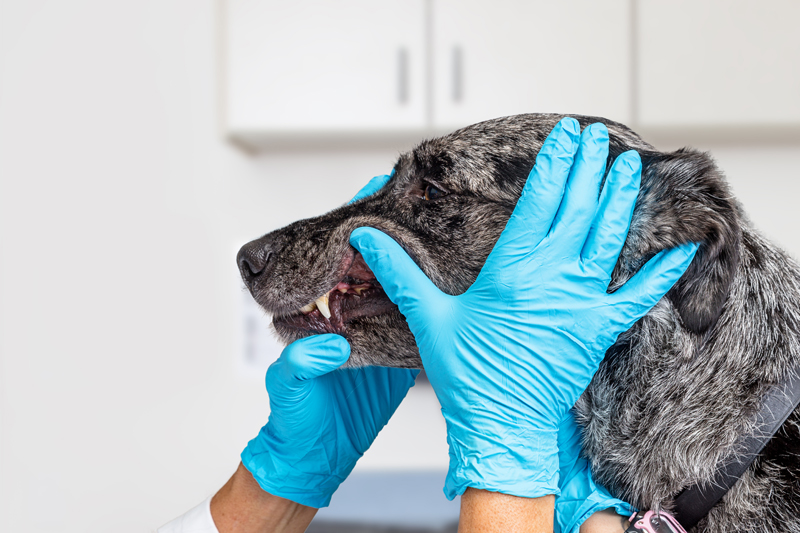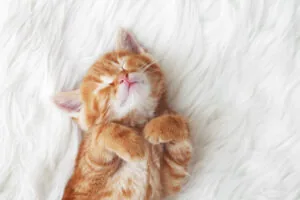February is Dental Health Month: What is a Dental Prophylaxis?

What Is a Dental Prophylaxis?
During a dental prophylaxis (sometimes called a prophy or a dental cleaning), plaque and tartar are removed from a pet’s teeth, and the health of the entire mouth (tongue, gums, lips, and teeth) is assessed.
A dental cleaning may include the following:
- Removal of visible plaque and tartar from the teeth
- Elimination of plaque and tartar from under the gum
- Probing of dental sockets to assess dental disease
- Polishing to smooth enamel scratches that may attract bacteria
- Dental radiographs (X-rays) to evaluate problems below the gumline
- Application of fluoride or a dental sealer
- Removal or repair of fractured or infected teeth
- Dental charting so progression of dental disease can be monitored over time
- Inspection of the lips, tongue, and entire mouth for growths, wounds, or other problems
How Do I Know if My Pet Needs a Dental Cleaning?
Regular inspection of your pet’s mouth is important to catch dental disease in the early stages. Tartar may appear as a brownish-gold buildup on the teeth, close to the gumline. Redness or bleeding along the gumline may indicate gingivitis.
Other signs of dental disease include:
- Bad breath
- Drooling
- Pawing at the mouth
- Difficulty chewing
- Loose or missing teeth
If you notice any of these signs in your pet, schedule an appointment with your veterinarian.
What Procedures or Tests Are Needed before?
A proper dental procedure for your pet requires him to be placed under general anesthesia. Prior to such a procedure, your veterinarian should perform a complete physical examination. Some basic blood tests, including evaluation of liver and kidney function and red and white blood cell counts, may also be done before an anesthetic procedure. If there is any concern of kidney disease, a urinalysis should also be part of the work-up. Concerns about heart function, such as the presence of a heart murmur, may need to be addressed.
How Is the Canine’s Dental Procedure Operation Done?
Your pet needs to be under general anesthesia for a dental procedure for several reasons. A complete examination and cleaning of all teeth cannot be performed efficiently and safely (for both your pet and the veterinarian) if your dog is awake. After your dog has been placed under general anesthesia, your veterinarian will examine all of the teeth and gums. If any periodontal pockets (loss of bone around the tooth, below the gum line) are found, dental radiographs may be done to assess the extent of damage. Appropriate treatment of diseased teeth is done. Using an ultrasonic instrument, your veterinarian will remove the tartar on the teeth by scraping the tartar with a vibrating probe. This allows minimal damage to the tooth enamel. After all the tartar and plaque has been removed, the teeth are polished with a special tooth polish. The length of a dental procedure can vary greatly. A straightforward cleaning may take 20-40 minutes. Any dental disease that requires more treatment than just a cleaning or any necessary tooth extractions will, of course require more time. Most dental procedures are complete within one hour and your dog may only spend one day in the hospital. Any concern of recovery from the anesthesia may warrant an overnight stay in the hospital for observation.
What Is the Typical Care After Dental Cleaning?
Care for your pet after a dental procedure depends on the extensiveness of the procedure. Special care is usually not required after a simple cleaning. If tooth extractions or advanced periodontal treatment was performed, feeding softer food, administering antibiotics and using an oral rinse may be recommended while healing occurs. A home dental care program including regular tooth brushing is a must. Your veterinarian will provide you with detailed instructions on how to brush or rinse your dog’s teeth.
Just as in people, daily brushing can help remove food particles from between your pet’s teeth. You can use a child’s toothbrush or purchase a finger brush from your veterinarian. Human toothpastes should be avoided because they contain ingredients that should not be swallowed by your pet. Your dog or cat may like the taste of pet toothpaste, which is available in flavors such as chicken, seafood, and malt.
Several dental diets and treats can also help keep plaque and tartar to a minimum. The diets tend to have larger kibbles to provide abrasive action against the tooth surface when chewed. Or they may contain ingredients that help prevent tartar mineralization. Ask your veterinarian which diets or treats are appropriate for your pet.
Good dental hygiene can add years to your pet’s life. To help keep your pets smiling bright, we celebrate Pet Dental Health Month this February – making this the perfect time to get your furry friend on a proper dental regimen.
Share This Post
Recent Posts
About Shallowford Animal Hospital
Shallowford Animal Hospital and The Pet Spa at Shallowford are dedicated to the exceptional, compassionate care your pet deserves. Pets hold a very special place in our families, and we treat yours like our own.



